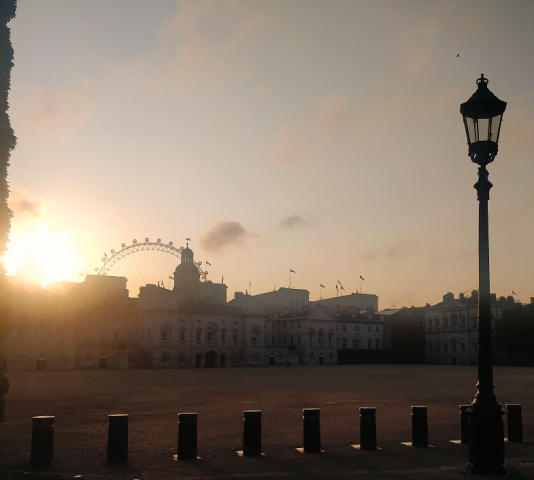Adventures on the DLR…
Once again, it’s been an age since I blogged. I’ve been working on a show in Greenwich, and me and my spanners have, as a consequence of this, become a bit of a fixture on the Docklands Light Railway as of the silly hours of the night. I used to have some serious problems with the DLR. Actually, I used to have only one serious problem with the DLR, and it was this – why oh why oh why can you stand on the platform at Canary Wharf Station and see, no more than 100 yards away, the platforms for both West India and Heron Quays? I mean, visibility in a light-at-the-end-of-the-tunnel sense would cause me no concern. But this is farting distance, this is shuffling distance, this is possibly the most frustrating distance you could imagine and as a busy commuter trying to get to a tech on time the fact that the DLR has barely accelerated to its average top speed of maybe twenty miles an hour on a good day, before it’s decelerating for a stop that you could have got to on a pogo stick, drives me up the wall!

That’s the bad.
The good, however, does begin to make up for some. For a start, the DLR goes to some excellent places. Canary Wharf is essentially a soulless temple to the great cause of making money, a beautiful, shiny, steel-glass den of towers and banks and suits that isn’t Real London, not really, far too neat and trimmed to be Real London, but is never-the-less, oddly hypnotising. As a kid I used to play a game at my neighbour’s house called Sim Tower, where y0u would build, surprisingly enough, a tower, as high as you could, and inside you’d place flats and offices and lifts and service shafts and laundry rooms and restaurants and viewing platforms and so on and so forth. Then you’d watch these tiny people moving around inside the tower, going about their daily lives, a bit like god examining a cross-section. In places like Canary Wharf, and to a lesser extent, Mo0rgate, once the sun goes down, you can play a similar game, and sit in the darkness looking at all the lives moving behind the lit-up windows. You can see everything that goes on, from the man playing mini-golf in his office next door to the man and the woman having an argument in the conference room next door to the woman who’s been on the phone for an hour, chin despairing on her hand. This isn’t nosey this is… just well-worn life.

There are a few other redeeming features about the DLR. It now reaches some areas of town that have been tragically under-served by public transport, out towards the Blackwall Tunnel and down towards Lewisham. Also, from a purely nerdy point of view, you can sit in the very front of the train and look at the world ahead, instead of to the sides of the train, which gives me a certain ten-year-old gleefulness. That is, when there’s not a driver who minds. The pattern of when there is and is not a driver is one I haven’t yet fully cracked. Sometimes the DLR seems entirely automated, gliding in and out of stations with a ghostly emptiness. Sometimes there’s a driver who seems to control his charge by the use of three buttons and a stick; sometimes there’s no driver but a semi-conductor, standing by a door in the middle of the train with their hand on a key looking up and down for stragglers who might get caught in the door as it closes. Sometimes teams of ticket inspectors sneak on to catch the unsuspecting, because the DLR stations for the most part don’t have exit gates, but rather trust in the upright spirit of the Great British Public to always be honest (or afraid of being caught) and, to repeat the phrase that has become the great cry of Transport for London – ‘Touch in and touch out at the beginning and end of your journey!’





